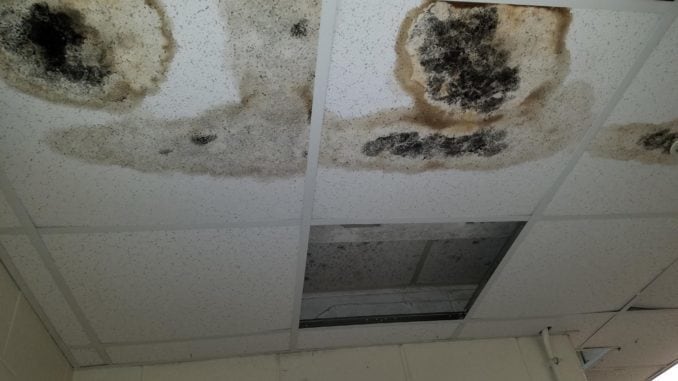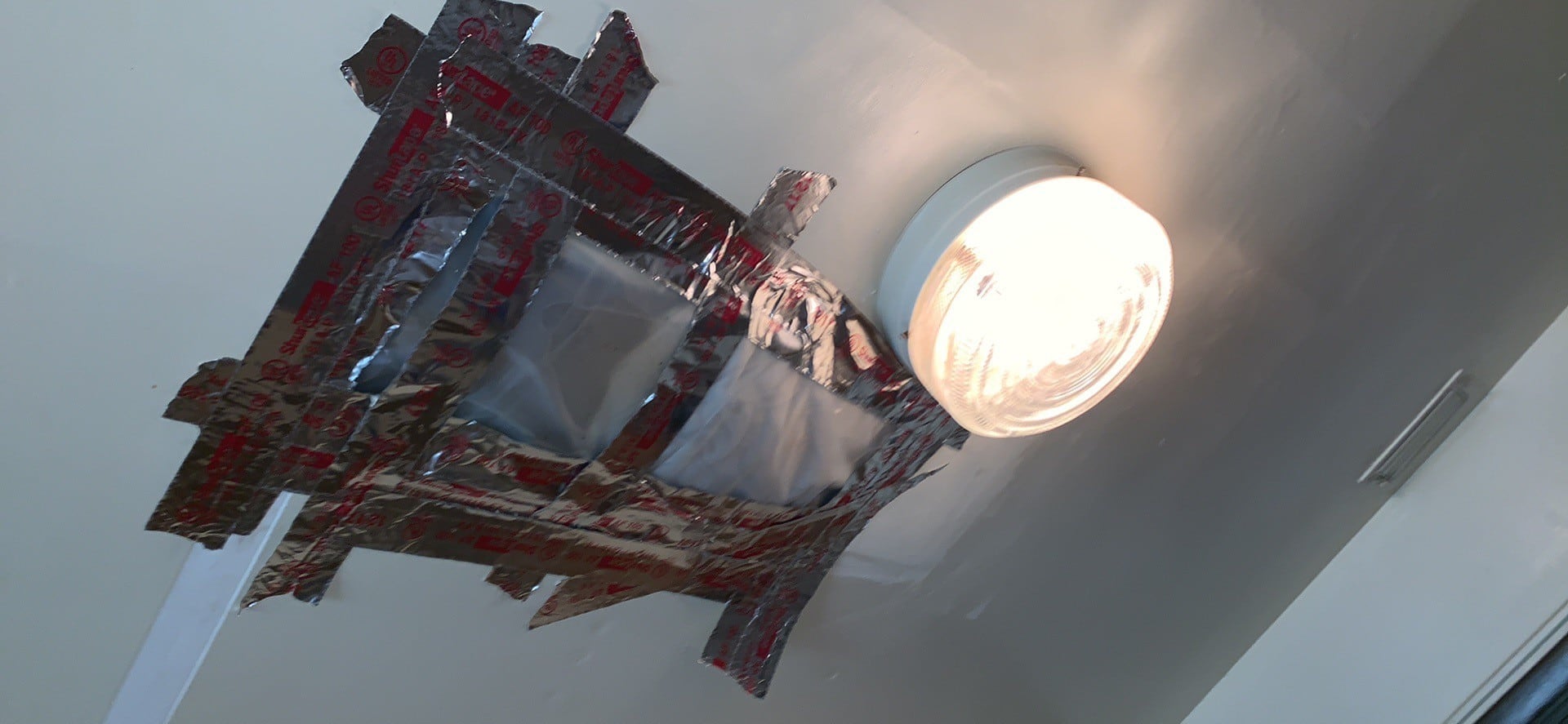Families’ concerns about health and safety issues in their privatized military housing are widespread, according to a new Army Inspector General report that reveals systemic problems with the companies’ responses to families, and with the Army’s oversight of the projects.
The government’s current oversight of these projects was insufficient to identify the current housing challenges, inspectors found. There are problems with lack of authority, confusion regarding roles and responsibilities, lack of training, dramatic personnel cuts, and lack of transparency among privatized housing companies. The majority of base officials acknowledged their installation had an ineffective oversight program.
Among other things, inspectors uncovered a 2013 Army policy that specifically prohibited health and welfare inspections of privatized housing — because of budget cuts that resulted in fewer housing personnel.
Two-thirds of the 1,180 residents across the Army’s privatized housing communities who participated in an IG survey conducted as part of their review stated they are dissatisfied with their overall privatized housing experience. Also, 64 percent said they would move off post if there were no financial costs or concerns, according to the report.
The review was ordered on Feb. 13 by then-Secretary of the Army Mark Esper, in the wake of reports about widespread problems of mold, water leakage, vermin infestations and other problems in military housing. Military spouses testified before lawmakers about their problems and frustrations with their houses.
At 48 of the 49 Army locations with privatized housing, residents expressed concerns with safety or environmental issues and some level of dissatisfaction with their privatized housing experience, according to the IG report. Of those who participated in the survey, 52 percent had environmental concerns with their housing. Top environmental concerns were mold, lead-based paint, asbestos, water quality, open sewage and radon gas. Residents reported problems with maintenance and the work order process; lack of communication and lack of transparency from the property management companies.
The inspectors found that life, health and safety items aren’t part of the current Army housing inspection requirement. And while numerous families have reported these concerns, the property management companies self-report, and didn’t recognize any life, health or safety concerns before this IG review, according to the report. Inspectors recommend these requirements be rewritten to include life, health and safety items.
Inspectors conducted 116 “sensing sessions” with residents at all 49 Army locations with privatized housing — 41 in the continental U.S., six in Hawaii and two in Alaska. They conducted 227 interviews of officials, including senior leaders at each installation, government housing personnel and private company property management personnel.
Families perceived the companies cared more about cost saving than on the quality of work and resident satisfaction, according to the report.
The inspectors found that the deals between the Army and the privatized housing companies present “unique challenges” to the Army — in particular, the deals favor the corporations.
“We are not surprised by the findings. We are grateful for this report. It validates the experiences of the brave military families who have spoken up for change,” said Shannon Razsadin, executive director of the Military Family Advisory Network, which conducted an online survey in early February of military families in all branches of service about their experience with privatized housing. More than half of 14,558 military families living in privatized housing reported a negative experience.
“There is a remarkable overlap between the Army IG report and MFAN’s research,” Razsadin said. She noted that the Army IG report points out that the companies’ housing satisfaction surveys didn’t look at health, safety and environmental concerns, a major issue MFAN learned about through its research.
“There is still a disconnect between what the housing companies are reporting, and now what MFAN and the Army IG have found, which must be addressed through a revamped evaluation process,” she said. The Army IG recommended a quarterly customer satisfaction mechanisms managed by the Army, to be used to support any incentives paid to the companies. Another is to develop a forum for residents to participate in the process for determining the incentive payments.
The IG’s finding of major shortcomings in the Army’s oversight explains some of the problems families have had in getting support from installation officials. At 48 of the 49 locations where there are privatized housing projects, garrison commanders, Directorate of Public Works directors and Army housing directors didn’t have detailed working knowledge of Army regulations and policy concerning the projects, or the business agreements for their specific location.
Senior commanders expressed concerns that they weren’t part of the decision-making process, and oversight of quality assurance, customer satisfaction, incentive fee awards and major decision approval authorities.
Indeed, inspectors found there are no details in Army housing regulations about senior commanders’ roles and authorities regarding privatized housing. And there’s no guidance to garrison housing offices or commands on how to perform and oversee the quality assurance. Installation housing offices weren’t able to validate the companies’ performance.
The IG recommends that Army officials conduct a manpower assessment to validate housing office personnel shortfalls. At 47 of 49 locations, officials reported insufficient staffing.
The Army is already addressing most of the 20 recommendations in the IG report, according to a statement issued by Army officials. They’ve added 114 additional employees to various installation housing staffs; established classes to educate senior commanders and garrison commanders about privatized housing and their roles; established 24-hour-a-day telephone hotlines at all installations;, and are using property-management portals to allow residents to track work-order histories and maintenance issues. The Army is working with the other branches of service and DoD to develop a joint tenant bill of rights.
Officials are also revising the handbook to refine the roles and responsibilities of senior commanders, rewriting report templates, reviewing business agreements with privatized housing companies and reworking company incentive-fee structures.
“We continue to drive change and remain steadfast in holding ourselves and privatized housing companies accountable to provide safe and secure housing on our installations,” said Gen. Gus Perna, commanding general of Army Materiel Command, in the Army’s statement.
RELATED

In the past decade, the Army’s severe budget reductions have forced cuts in the government workers in housing offices on installations. To manage that risk, inspectors noted, the Army issued a policy that removed much of the garrison commanders’ authority and oversight responsibility for privatized housing. That 2013 policy specifically prohibited health and welfare inspections of privatized housing. It also removed the garrison commander from the eviction process and restricted them from influencing the housing assignment processes.
Other IG findings:
- At seven locations, residents voiced a perception of retribution for complaints about housing issues, such as additional move-out fees, fines due to yard maintenance or other discrepancies, and threats to call or involve the chain of command. Each resident was given the opportunity to speak with the inspectors privately at the conclusion of their session. The information was then referred to local installation/command inspector general for action, and to the Army Inspector General Assistance Division for situational awareness.
- 64 percent of residents surveyed said their property manager isn’t responsive in solving their housing needs.
- 76 percent are dissatisfied with communications from the property manager regarding potential hazards in the home.
- About a third — 36 percent — indicated some level of satisfaction with the quality and service provided by the property manager.
- Residents at 48 of 49 locations expressed some level of dissatisfaction with aspects of maintenance performed on housing, including problems with timeliness and the overall quality of the maintenance work.
- 74 percent are dissatisfied with follow-up by the property managers to ensure issues are resolved.
- At most locations, residents didn’t know how to escalate their issue either with the company or the Army housing office.
- At 45 of 49 locations, residents expressed concerns about the professionalism of the maintenance staff.
- Residents often said the company was more stringent during the move out inspections, where fees were incurred, than during the move-in inspection.
- Residents are concerned that company-provided customer satisfaction data conflicted with actual resident experiences. The data provided by the company generally displayed higher levels of resident satisfaction.
- The companies weren’t fully forthcoming with information, and the Army didn’t aggressively pursue the information. When the company doesn’t fully disclose information, it hurts the Army’s ability to validate reports such as work order metrics and incentive payment metrics, inspectors stated..
Karen has covered military families, quality of life and consumer issues for Military Times for more than 30 years, and is co-author of a chapter on media coverage of military families in the book "A Battle Plan for Supporting Military Families." She previously worked for newspapers in Guam, Norfolk, Jacksonville, Fla., and Athens, Ga.




